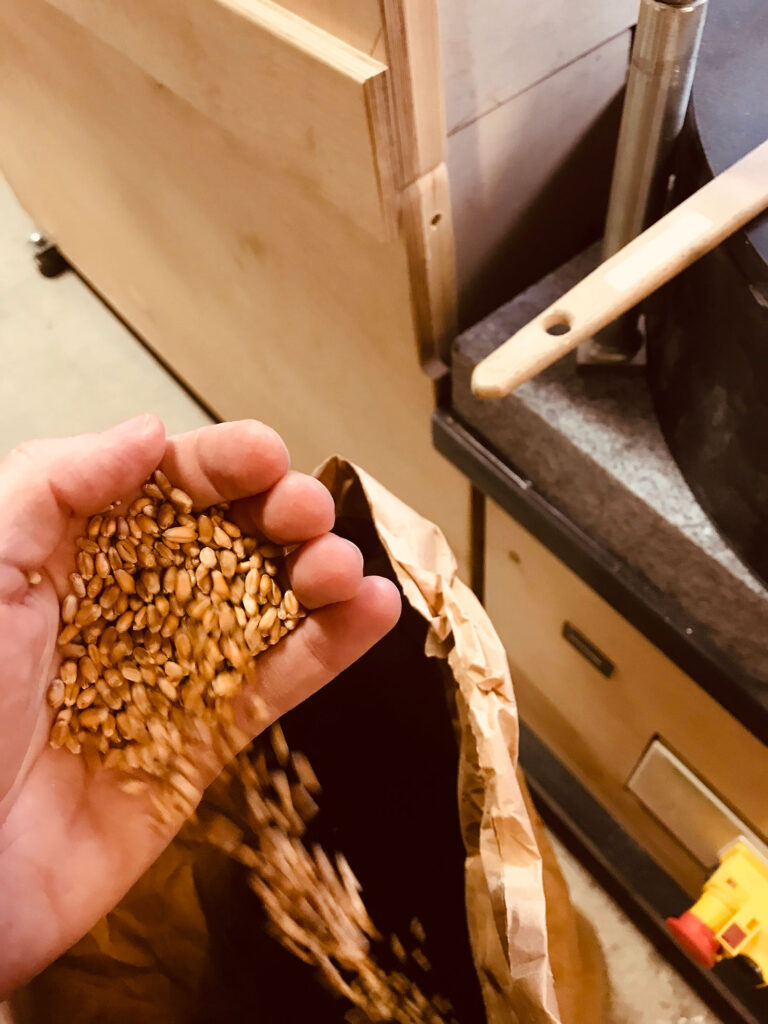In this infographic we look at 5 key points:
- What cereals can I pass through an Astréïa stone flour mill?
- What is the average budget for an Astréïa flour mill?
- What yield can we expect from an Astréïa stone mill?
- How do you extract the flour from the Astréïa mill?
- Does the Astréïa mill comply with current health standards?
You’ll find these points illustrated. To cut a long story short, here are the answers to these questions:
- Any cereal that is sufficiently dry (12-14%) can be unrolled in an Astréïa flour mill.
- You need to budget around 8500 to 9000 euros for an Astréïa type flour mill with 50cm millstones.
- You can expect an output of 15 kilos of flour per hour for a 50cm mill, and twice that for a 100cm mill (we’re talking kilos of flour, of course, and not wheat, as some traditional mill dealers may claim, so be careful with this point. A mill makes flour, not wheat…)
- You can extract the flour manually with a shovel or you can choose a system that will extract the flour (auger) and bag it (bagger). With a large 100cm diameter mill, this solution is not an option, as it is not efficient to stand in front of your mill to do this work continuously.
- The Astréïa mill naturally complies with current health and safety standards.




